
Paris, 3020: Daniel Arsham Recasts Sculptural Masterpieces as Future Relics
Words by Eric David
Location
Paris, France
Paris, 3020: Daniel Arsham Recasts Sculptural Masterpieces as Future Relics
Words by Eric David
Paris, France
Paris, France
Location
New York-based artist Daniel Arsham likes to confound viewers with time-defying work that conflate past, present and future, and his latest exhibition at Perrotin Paris, "Paris, 3020", doesn’t disappoint. On view until March 21, 2020, the show presents a new body of work that re-imagines the sculptural masterpieces of major European museums such as Musée du Louvre in Paris, Acropolis Museum in Athens and the Kunsthistorisches Museum in Vienna as eroded relics encountered some time in the far future (the year 3020 perhaps). Intermingling periods and subjects – Greek mythological friezes meet busts of Roman dignitaries meet Renaissance religious statues meet Baroque decorative sculptures – in what is both a homage and a critique of the canons of Western Art and the enduring power of their iconography.
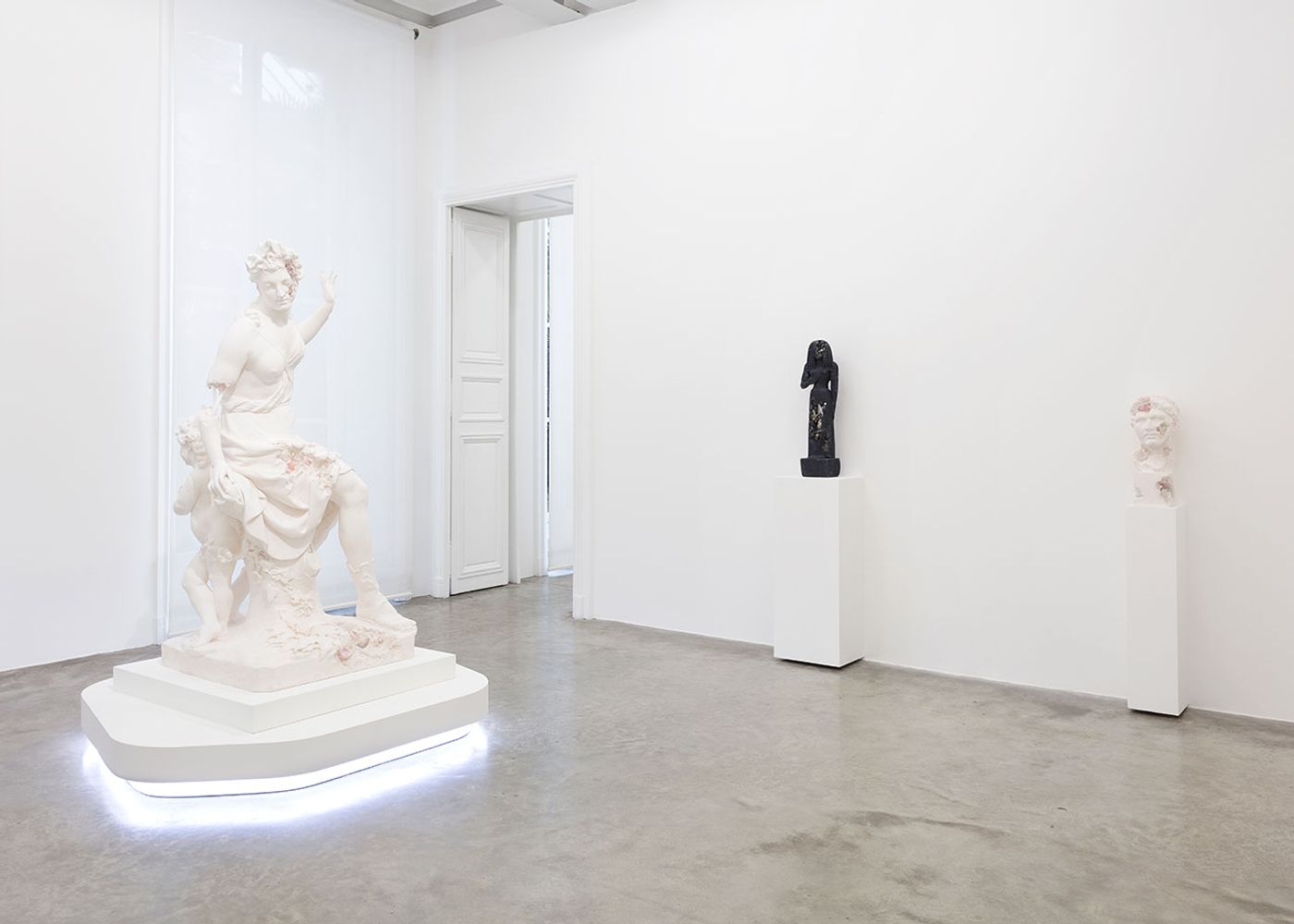
View of the exhibition “3020” at Perrotin Paris. Photo by Claire Dorn. © Courtesy of the artist and Perrotin.
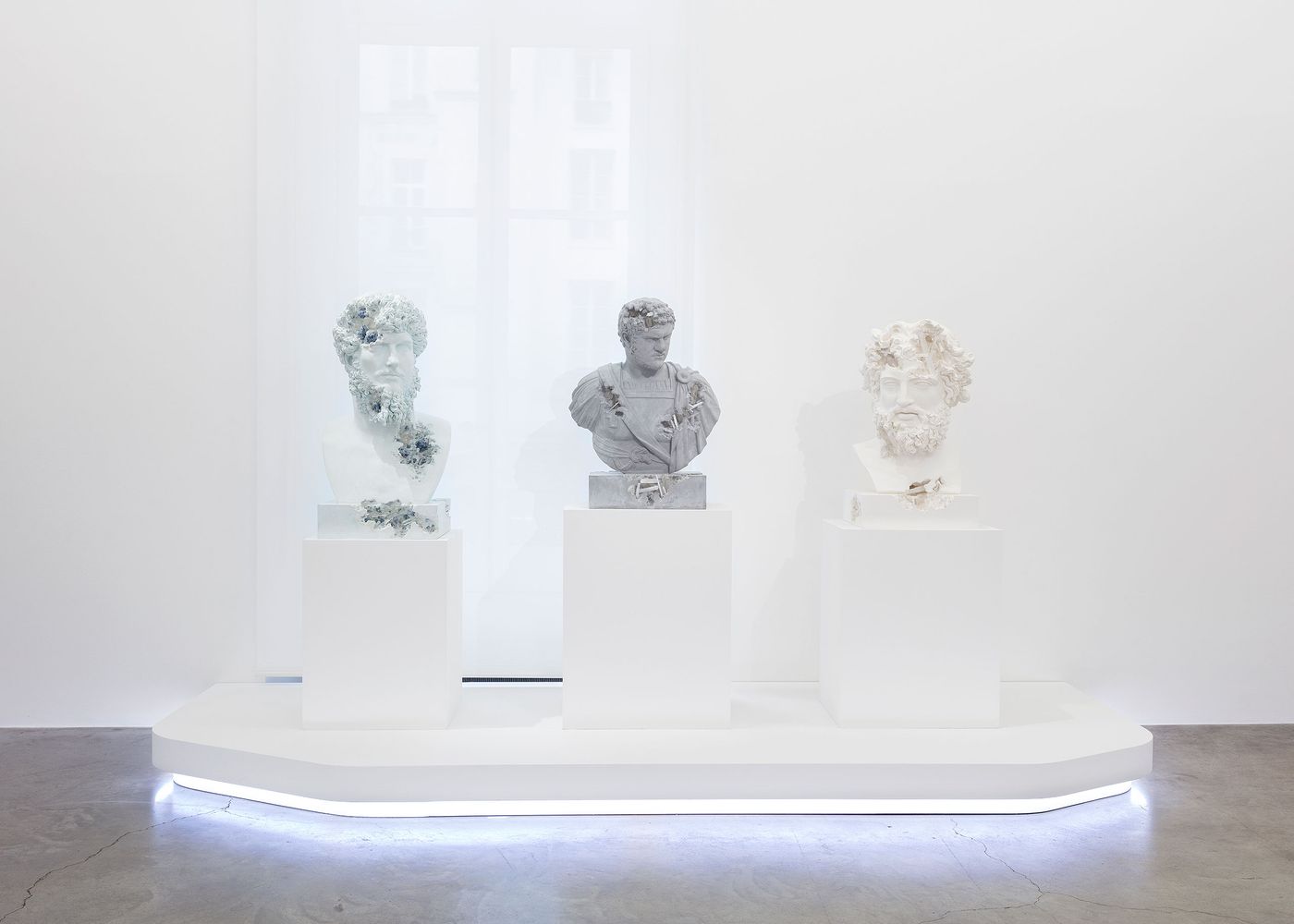
View of the exhibition “3020” at Perrotin Paris. Photo by Claire Dorn. © Courtesy of the artist and Perrotin.

Daniel Arsham, Blue Calcite Eroded Venus of Milo, (details) 2019. Blue calcite, hydrostone. 216 x 60 x 65 cm | 85 1/16 x 23 5/8 x 25 9/16 inch, 150.00 kg. Photo by Guillaume Ziccarelli. © Courtesy the artist & Perrotin.

Daniel Arsham, Blue Calcite Eroded Venus of Milo, 2019. Blue calcite, hydrostone. 216 x 60 x 65 cm | 85 1/16 x 23 5/8 x 25 9/16 inch, 150.00 kg. Photo by Guillaume Ziccarelli. © Courtesy the artist & Perrotin.
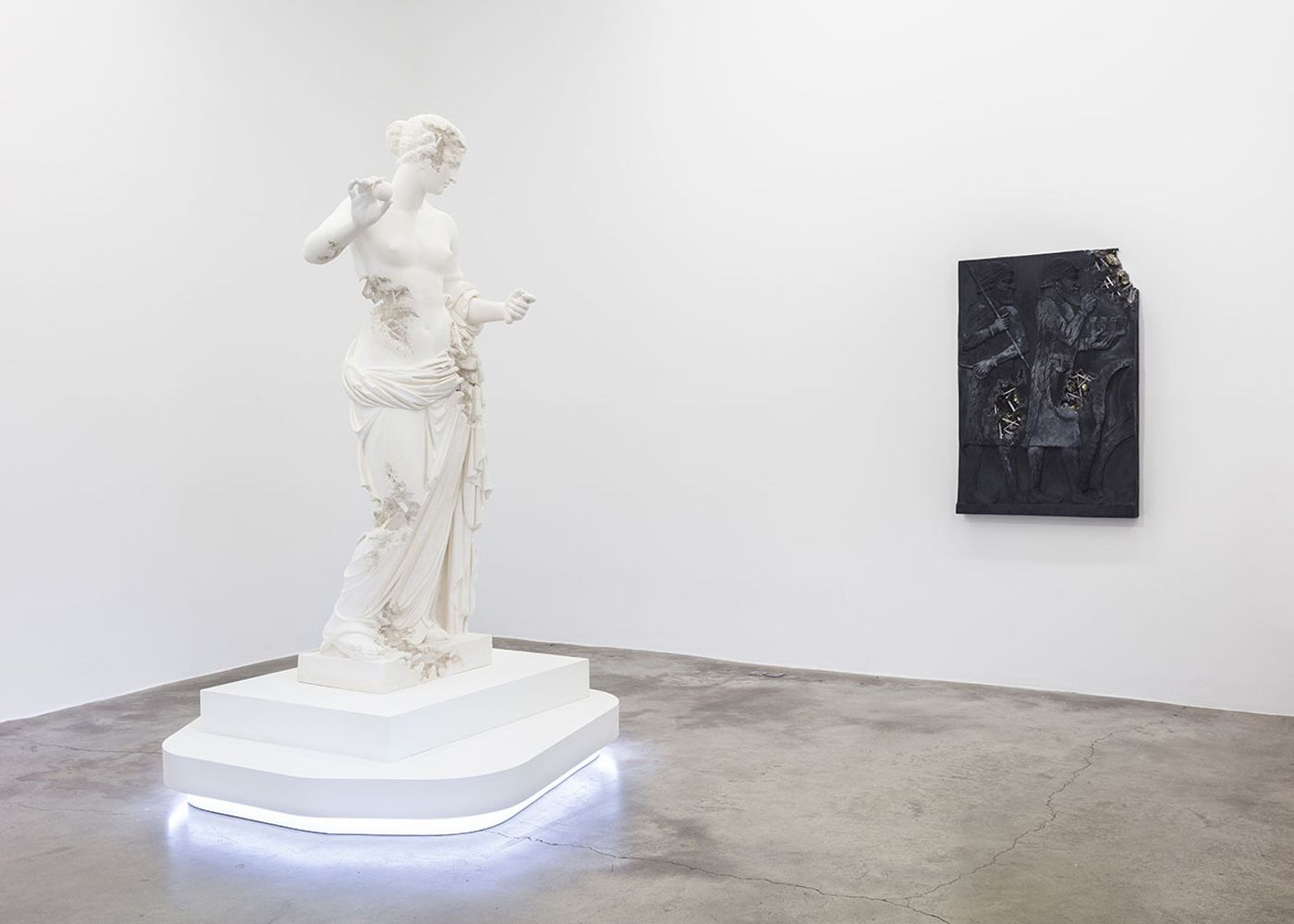
View of the exhibition “3020” at Perrotin Paris. Photo by Claire Dorn. © Courtesy of the artist and Perrotin.
Arsham’s new work builds on his 18-year-long exploration into fictional archaeology whereby contemporary objects are transformed into “future relics”. Inspired by a research trip to Easter Island in 2011 where archaeologists uncovered (around the base of a Moai statue) tools left behind by a previous archaeological expedition a century ago, he has been using his signature technique of crystallization to reframe everyday objects as relics from the past in order to evaluate the present with the perspective of time. But whereas his previous work focused on ready-made artefacts of pop culture significance and consumerist valence, from Disney characters and Macbooks to teddy bears and Leica cameras, for this exhibition the artist has stepped back in time, reclaiming iconic artwork of Western Art, from classical antiquity to the Renaissance to Neoclassism, questioning their timelessness and symbolic status.
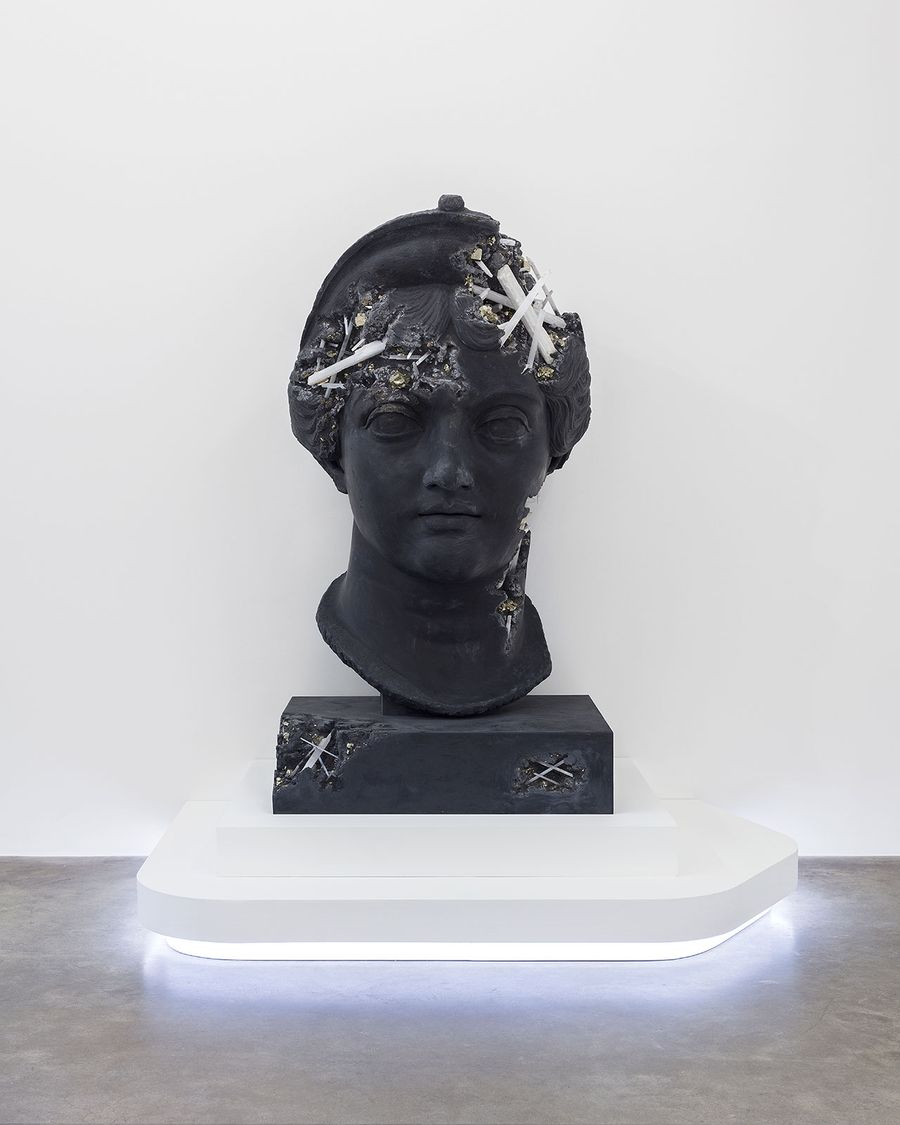
View of the exhibition “3020” at Perrotin Paris. Photo by Claire Dorn. © Courtesy of the artist and Perrotin.
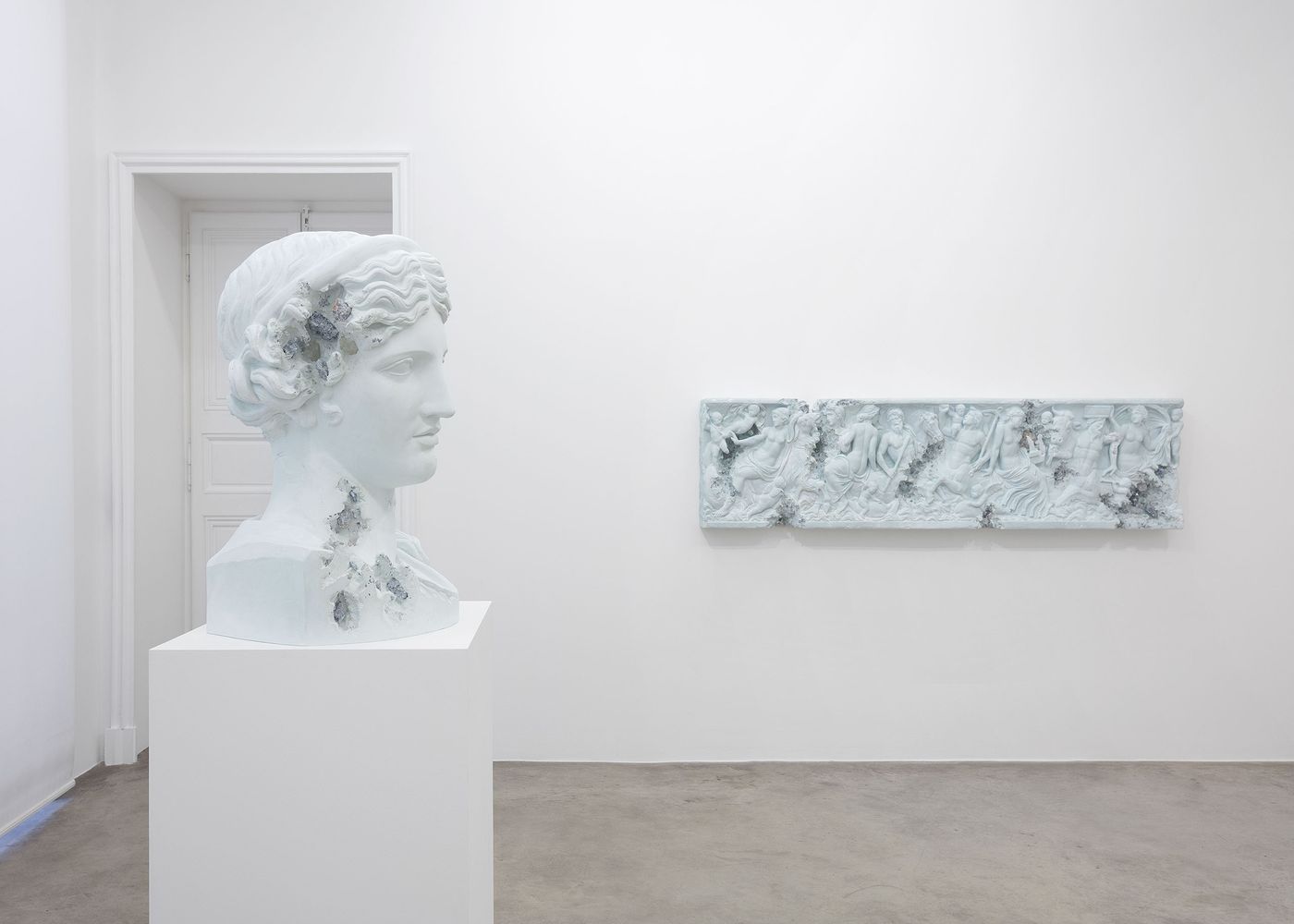
View of the exhibition “3020” at Perrotin Paris. Photo by Claire Dorn. © Courtesy of the artist and Perrotin.
Key to recreating the iconic artworks like Venus de Milo and Michelangelo’s Moses, which are exhibited opposite each other at Perrotin, was gaining access to the Réunion des Musées Nationaux – Grand Palais (RMN), a 200-year-old moulding studio that reproduces masterpieces for several major museums throughout Europe, which meant Arsham could use the studio’s molds to produce perfect scale replicas of the original sculptures. Using hydrostone as his base, mixed with natural pigments such as volcanic ash, blue calcite, selenite, quartz and rose quartz, Arsham’s sculptures swap the glossy whiteness that dominates classical glyptotheques for subtle pastel hues or darker charcoal tones. The unusualness of the coloration is enhanced by the erosions that the artist has chiselled and the crystallised forms he has incorporated within. Whereas the act of chiselling is a nod to the sculpting techniques of the Renaissance sculptors, Arsham’s signature crystallization process alludes to a geological time scale, as do the natural pigments.
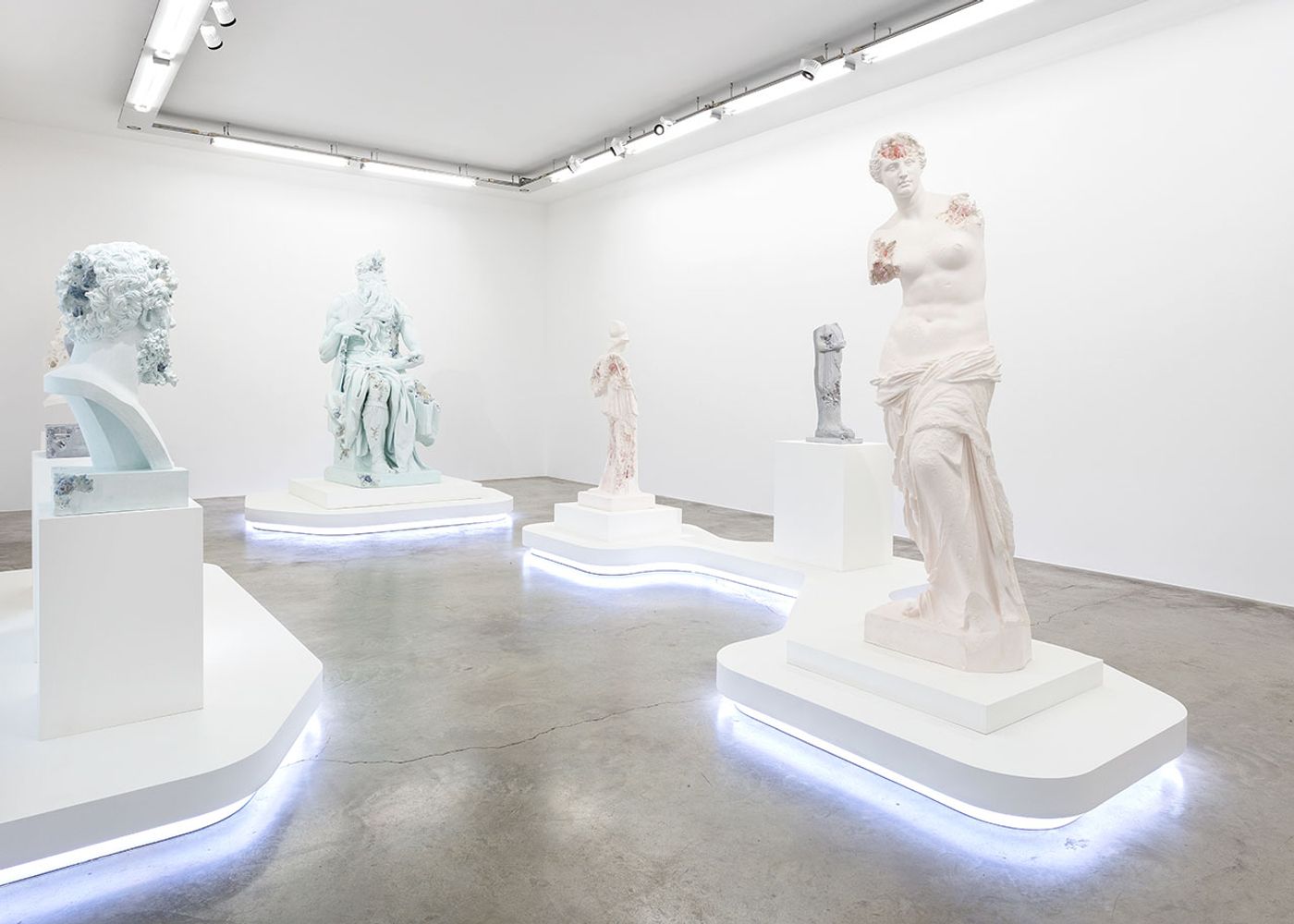
View of the exhibition “3020” at Perrotin Paris. Photo by Claire Dorn. © Courtesy of the artist and Perrotin.
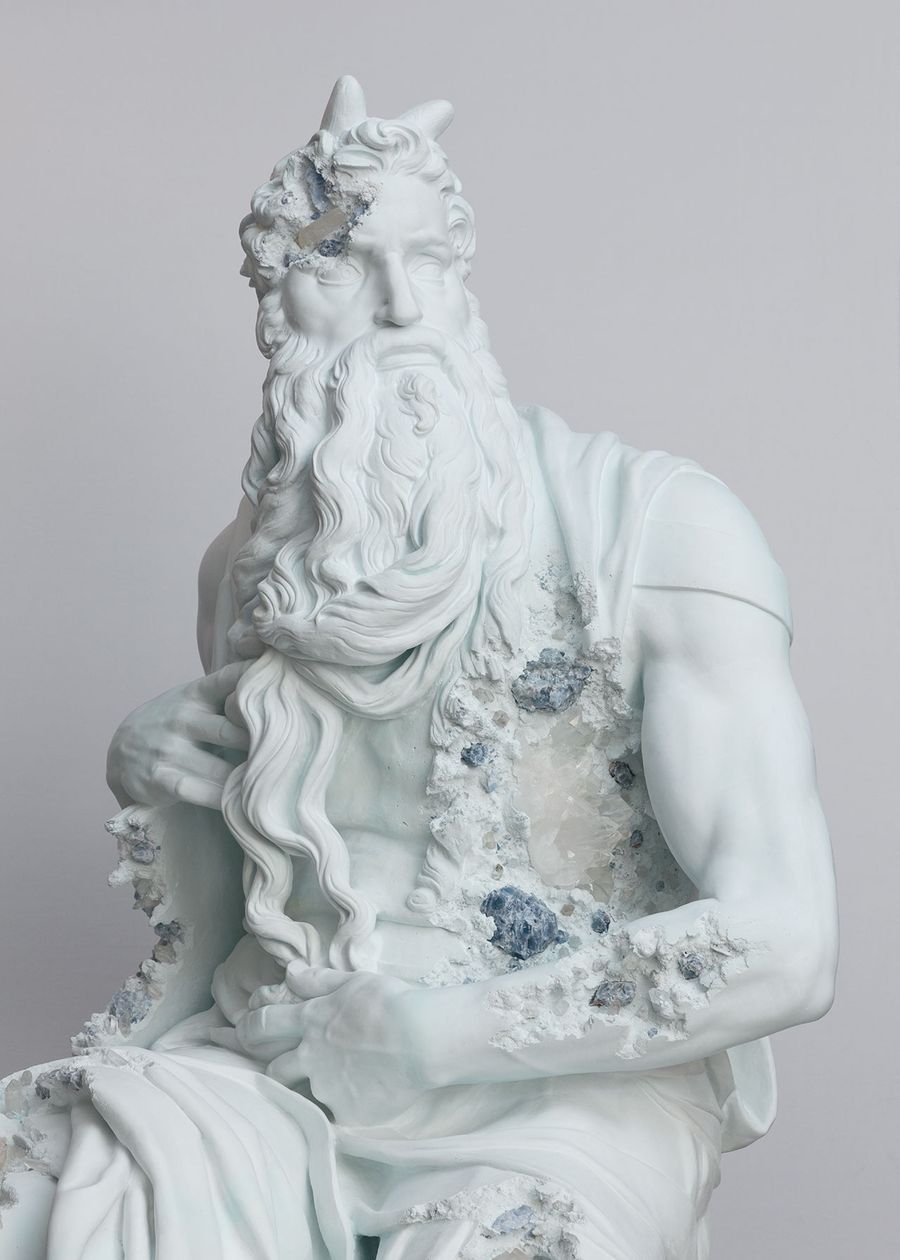
Daniel Arsham, Blue Calcite Eroded Moses, (detail) 2019. Blue calcite, hydrostone. 260 x 119 x 125 cm | 102 3/8 x 46 7/8 x 49 3/16 in. Photo by Claire Dorn. © Courtesy the artist & Perrotin.
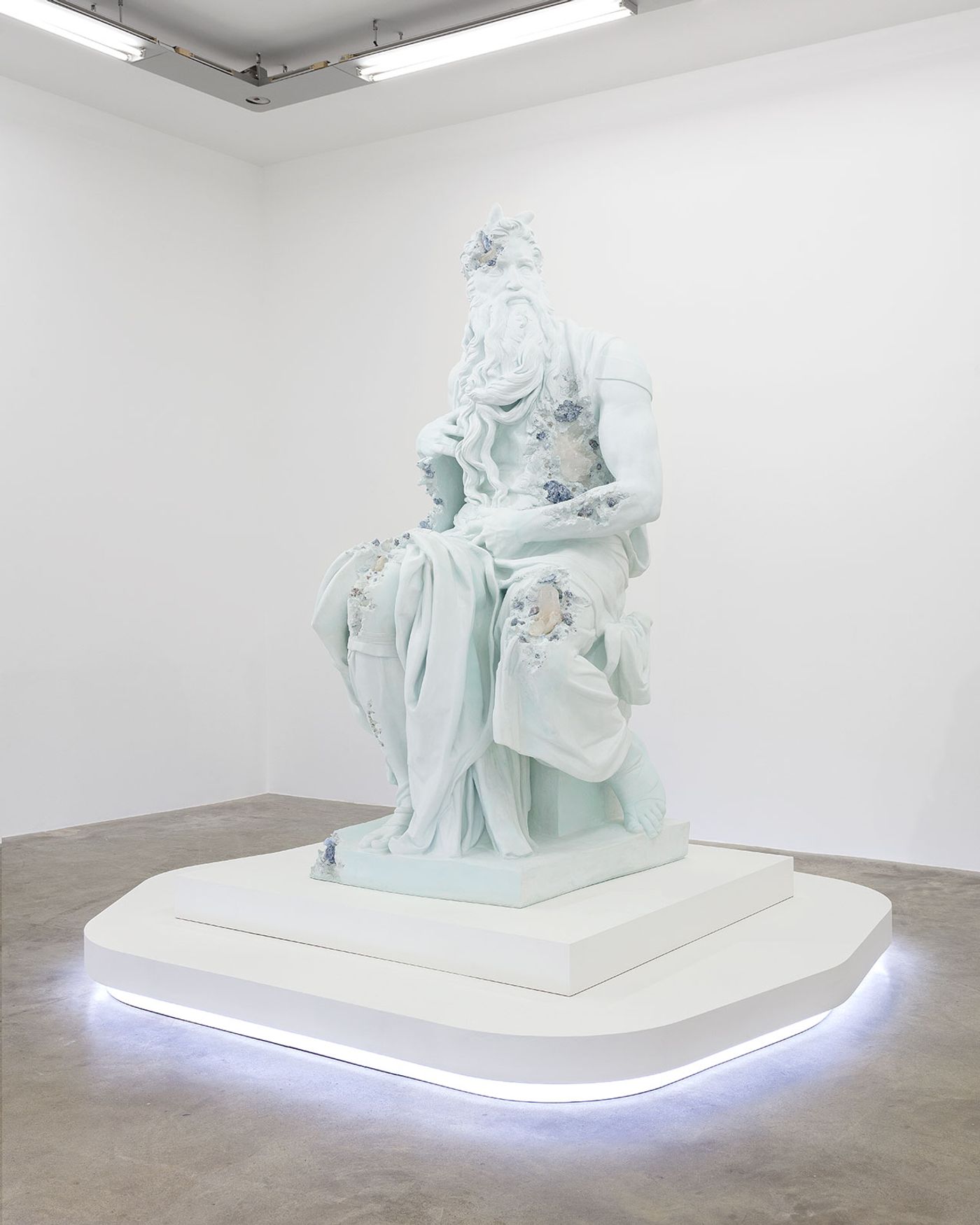
View of the exhibition “3020” at Perrotin Paris. Photo by Claire Dorn. © Courtesy of the artist and Perrotin.
Arsham’s eclectic selection of sculptures from classical antiquity up to the early 1800s highlights the artistic continuum shaping Western art as well as touches on a diverse set of issues from the representation of women in antiquity to the ancient world’s conflation of royalty and deity. Familiar and yet fantastical, the iconic “future relics” are accompanied by charcoal drawings that evoke the art historical tradition of sketching while reinforcing the fictionalized creation myth behind them. The fusion of reality and fiction is also picked up by the exhibition design which borrows display strategies like cubic plinths and raised platforms from modern museums – a nod to the role of museums in shaping art history and canonizing works of art – but jazzes them up with concealed neon lighting and organic shapes more in tune with the gallery setting.
Looming large in our collective memory, no less because of their status as our esteemed museums’ most prized possessions, the iconic sculptures that Arsham has chosen to replicate for “Paris, 3020” in the gallery context of Perrotin encourage visitors to re-evaluate the importance of such artwork in shaping contemporary culture.
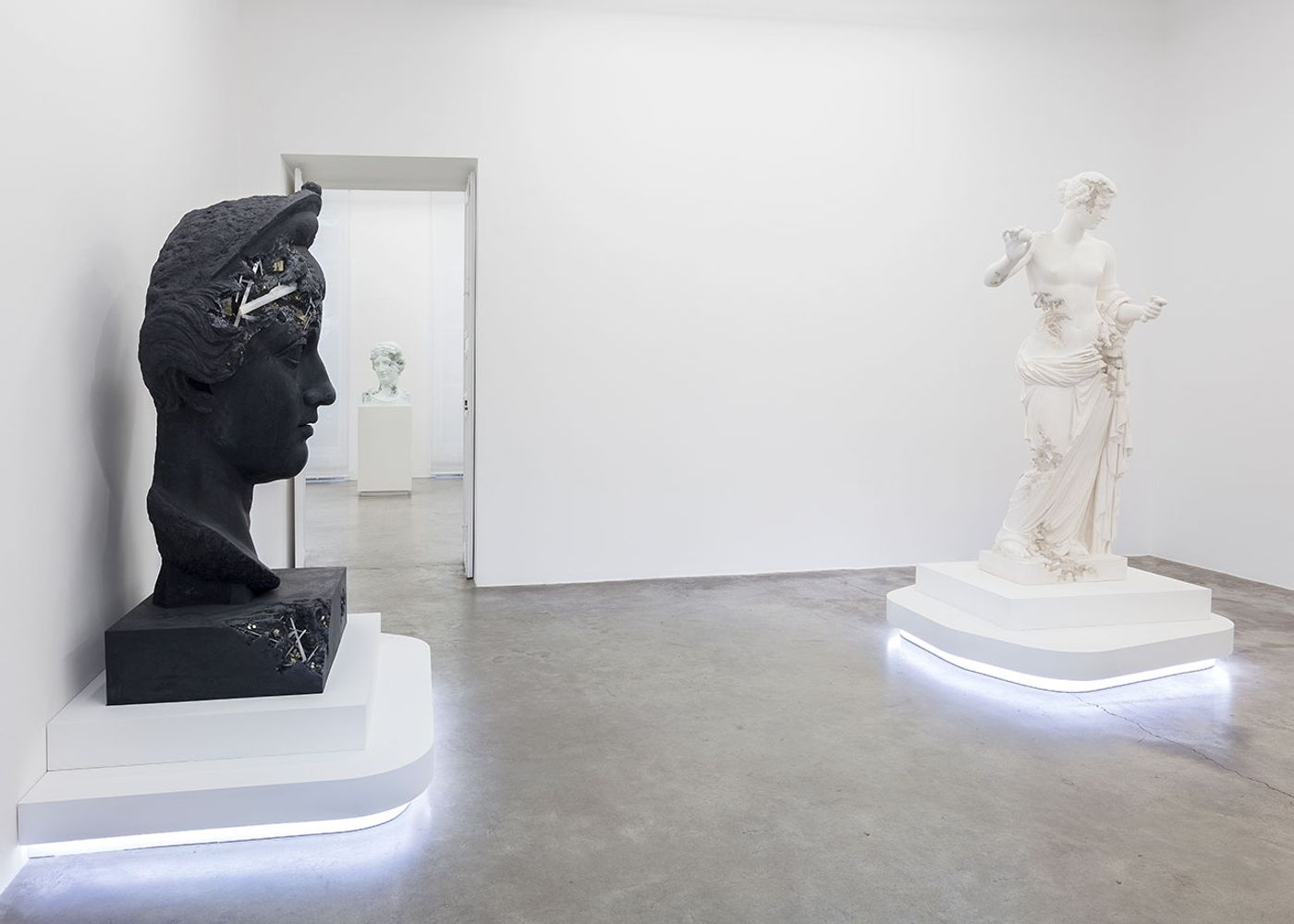
View of the exhibition “3020” at Perrotin Paris. Photo by Claire Dorn. © Courtesy of the artist and Perrotin.
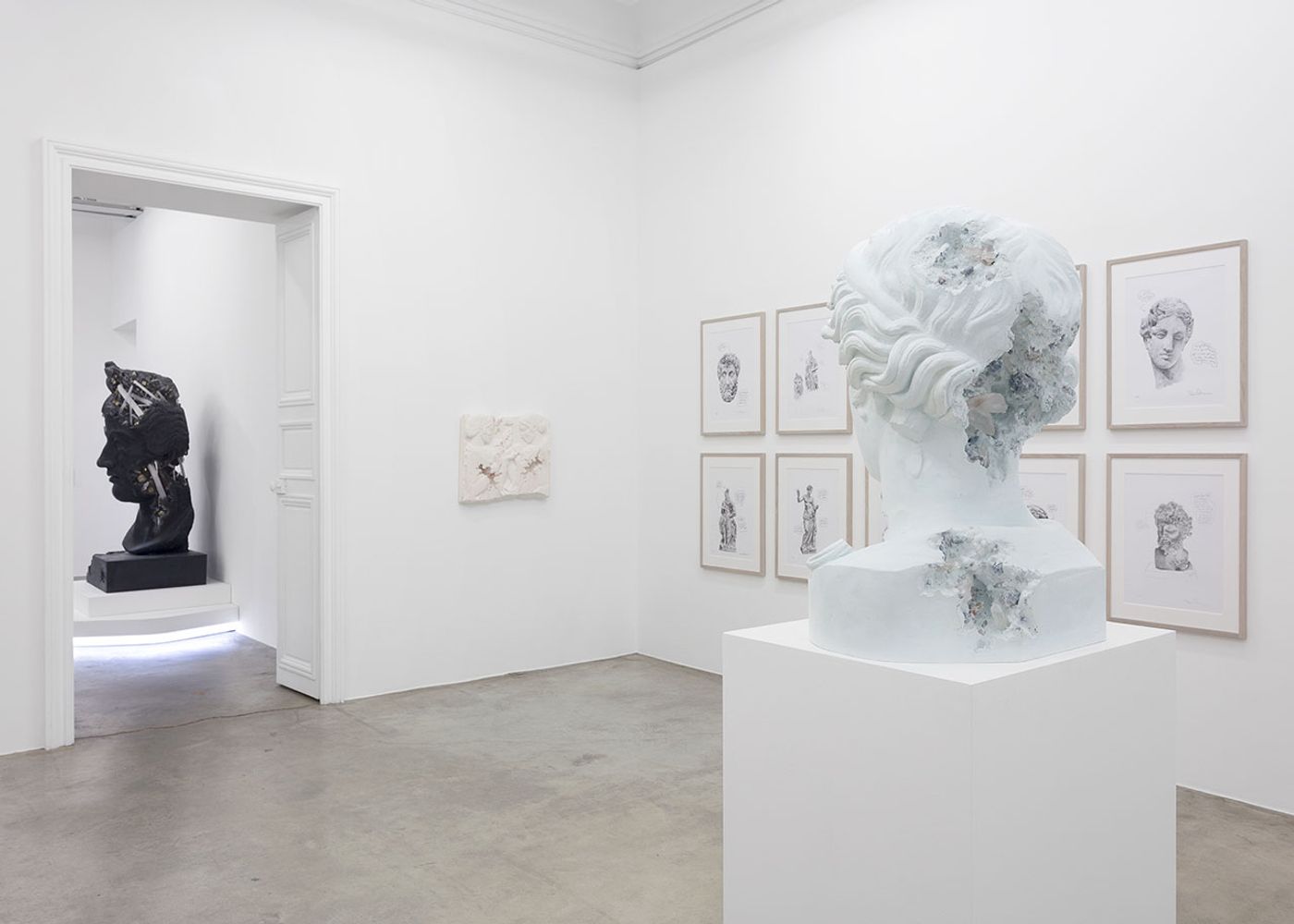
View of the exhibition “3020” at Perrotin Paris. Photo by Claire Dorn. © Courtesy of the artist and Perrotin.

View of the exhibition “3020” at Perrotin Paris. Photo by Claire Dorn. © Courtesy of the artist and Perrotin.

Portrait of Daniel Arsham in his studio. Photo by Guillaume Ziccarelli. © Courtesy of the artist & Perrotin.